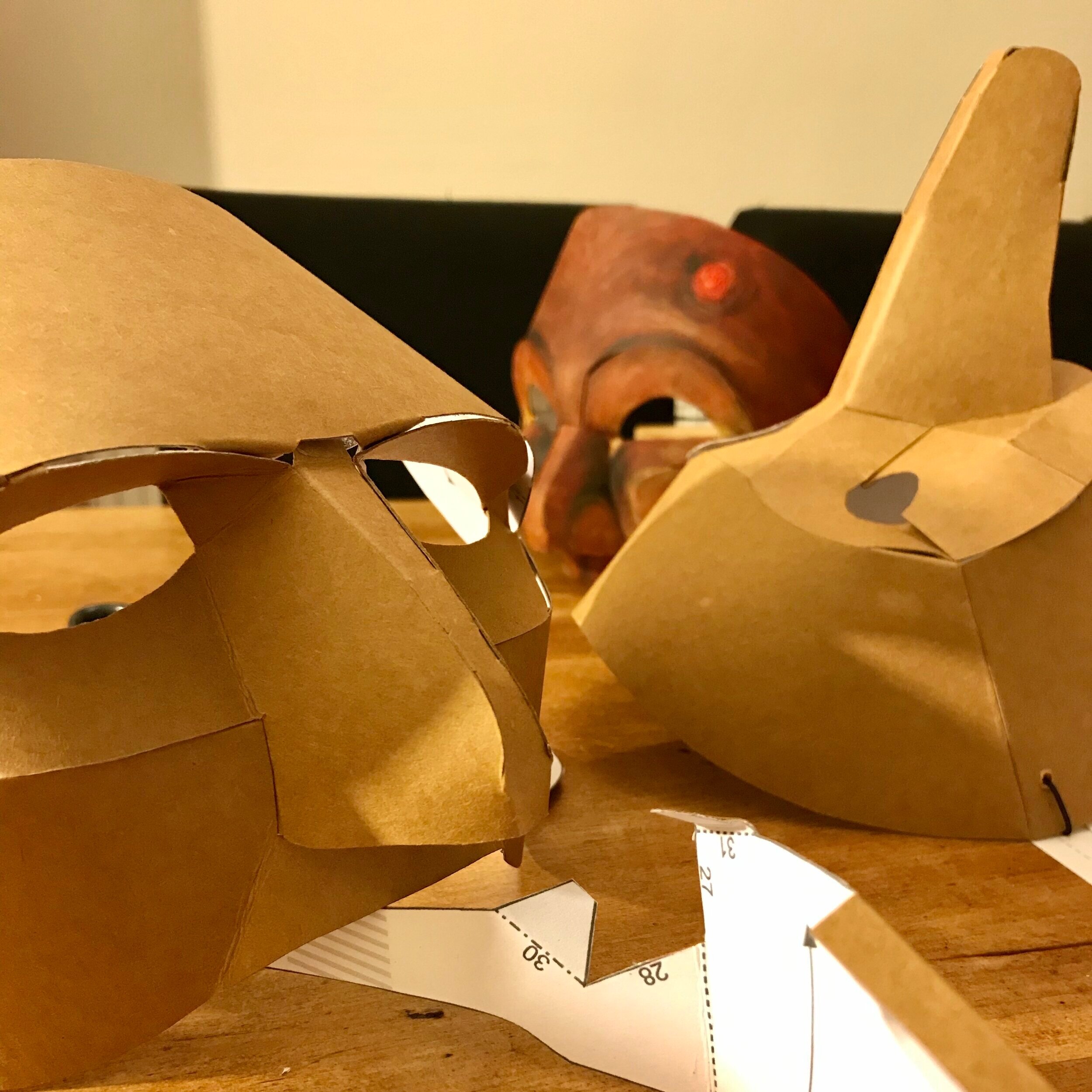Making & Using Commedia dell'Arte Masks
An affordable solution to create a set of four Commedia masks for every student in your class! Fantastic training tools that students can personalise and keep.
Through mask making students discover the contours and lines that define the character’s personality. Then we breathe life into the masks discovering how to animate these archetypal personas. The connection that students discover with the masks, through this process, can be profound.
“With the Pantalones of our time cutting off funds to the arts at every opportunity, we hope these prove useful to drama teachers around the world”
Level:
KS3 to Degree level (ages 13+)
Location:
Online or in person
Duration:
1-2 days in person
4-8 hours online
Part 1 - Mask making: either delivered as pre-recorded ‘How to’ videos that can be accessed in class time and/or as homework, or delivered in person across 4 hours
Part 2 - Mask using: 1 - 3 hours (online) / half day or one day (in person)
Bespoke workshops can be delivered to make and learn to use masks for a specific production. Particularly suitable for Shakespeare productions such as ‘A Midsummer Night’s Dream’.
Part 1 - Mask making workshop:
Initially designed in response to Covid-19 but now a fantastic resource for any climate! This mask making workshop enables students to create their own commedia dell’arte mask(s) for use in performance. Working closely with mask makers Wintercroft, six commedia dell’arte mask templates have been designed that can be easily built by anyone, using local materials, removing the need for costly purchases of pre-made Commedia masks*.
This workshop can now be offered in person or as a teacher-led session with our easy-to-follow, step-by-step, online tutorial videos videos that guide students through the mask making and finishing processes. These can be accessed in the classroom or at home, available online for students to stop and start as needed.
Each student can build one or more masks for their personal use over a series of lessons or as part of a one to two day intensive - the level of detail you add to the finished masks (paint, hair, warts) is up to you. We guide you and your students throughout the mask making and finishing processes to produce beautiful and useable masks.
Allow a minimum of three hours to complete each mask with time in between to allow masks to dry after painting.
Participants will learn:
How to craft their own commedia dell’arte mask from paper and card following our step by step making videos, using provided templates*
Specific exaggerated movement, voice and mannerisms for the commedia dell‘arte masks they have created
The key principles of mask work and commedia dell’arte performance that can then be applied to devising and other performance work.
Level of complexity:
Harlequin - moderately easy
Zanni - moderately hard
Pantalone - moderately hard
Capitano - hard
*New:*
Columbina - moderately easy
The Doctor - moderately easy
*requires the one-off, pre-purchase of one fantastically affordable Commedia dell’Arte Mask Set from Wintercroft.com (and/or Doctor and Columbian masks). This gives you four-six mask templates, emailed to you as a printable PDF (regular A4 size, suitable for a home printer) that can be used again and again - one set for all your students.
Part 2 - Mask using workshop:
Once your students have created their masks, we will lead them through a mask use workshop, teaching them how to animate and embody the Commedia masks to discover the movement repertoires and personalities for these exaggerated character types. This can be done as part of a one-two day intensive or online. The minimum workshop length is one hour with the option of booking a longer session to go into greater depth. An extended workshop can be designed that leads to a performance. The workshop can also be adapted to support the study of set texts such as A Servant of Two Masters, Midsummer Night’s Dream or Much Ado About Nothing. The mask using workshop can cover part or all of these areas:
The historical context of Commedia dell’Arte, the origins and theatrical relevance of each character
Specific exaggerated movement, voice and mannerisms for the characters, using the breath, grammelot (gibberish language that imitates dialects), masks and props
The key principles of mask work and the imperative for the actor-audience relationship
The relationships between the characters, exploring classic lazzi (comic gags), burle or meccanismi (rehearsed comic sequences between two or more characters)
“The perfect workshop to introduce Commedia ... superbly interactive and inspiring with high quality demos and the ability to hold the space while enabling freedom of expression”






